I used to think of myself as a bit of a birder, then I was a birder who looked at other wildlife, and these days it's the other wildlife that I look at most. I still enjoy a spot of birding though, so when I got a chance to have a couple of hours to myself at Dungeness on a recent family holiday, it was a nice change of pace. Just before we'd arrived on the south coast, a buff-breasted sandpiper (a vagrant from America) had been reported, along with a cattle egret - a species that I've seen all over the world, but never in the UK. The egret was very obliging, hanging out with some cows on a field by the entrance track. That brought my UK birdlist up to a rather under-whelming 244 species, could I make it 245. Unfortunately it wasn't meant to be - the sandpiper had probably departed a day or two before, a despite some concerted efforts to string a distant juvenile Ruff, it wasn't meant to be.
 |
| Terrible phone-scoped picture of the Cattle Egret, being an Egret next to some cattle |
Of course, even though birds were the main focus of attention, I couldn't help stopping to look at a few insects along the way. The ditches by the side of the entrance track were playing host to the curiously spotty eyed Eristalinus sepulchralis, a common wetland species, and on the main part of the reserve I saw my first Helophilus trivittatus of the year. This latter is a migrant species which occurs in variable numbers each year, and differs from the resident Helophilus species in lacking a black stripe on the face, as well as generally being a larger and paler looking insect. I'd also packed the moth trap in the hope of catching a migrant or two, and succeeded with a handsome bordered straw perched on the top of the trap one morning. After last year's influx these seem to have been a lot thinner on the ground this year.
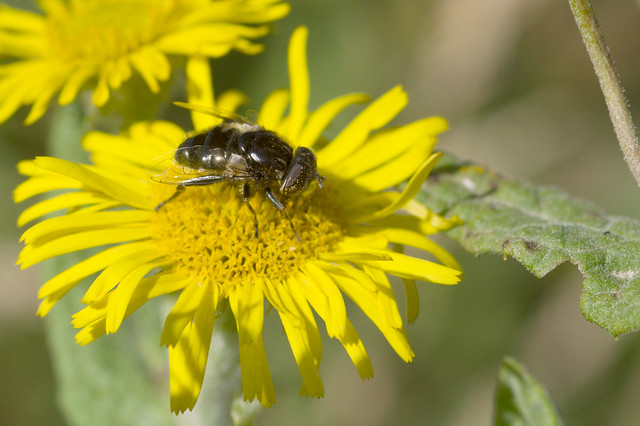 |
| Eristalinus sepulchralis |
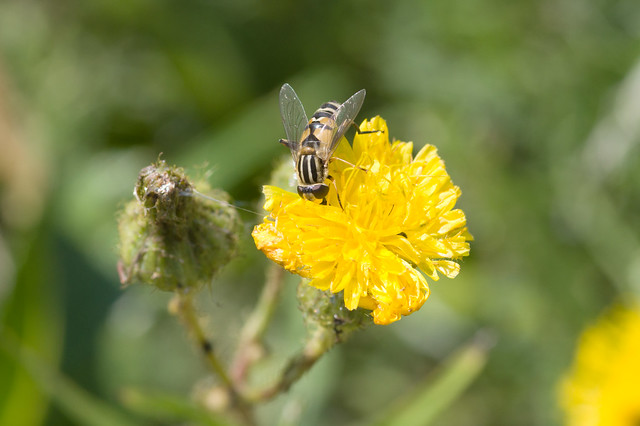 |
| Helophilus trivittatus |
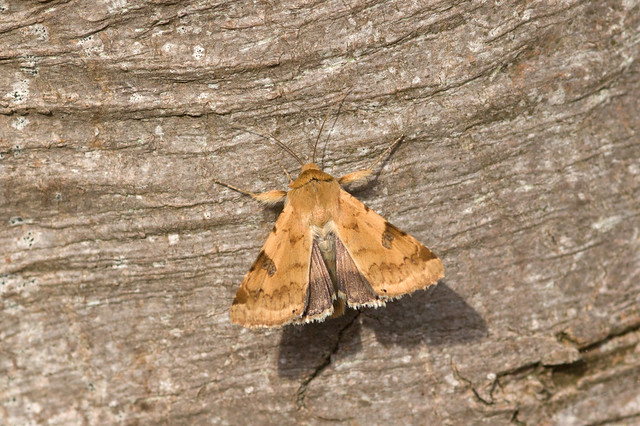 |
| Bordered Straw |
On the way back from the south coast, it turned out that another RSPB reserve, Rainham Marshes, is conveniently placed around half-way on the journey, and even has a nice cafe to grab some lunch, so that's what we did, and as the weather was still glorious, we went for a stroll onto the reserve. We failed to see any of the burgeoning population of water voles - although the grass snake swimming down one of the channels might have had something to do with that, but we did see another Rainham speciality, the endangered Shrill Carder Bee. Most of the individuals seen were looking at bit the worse for wear so late in the year, but one or two fresher looking ones, presumably recently emerged queens, were also around.
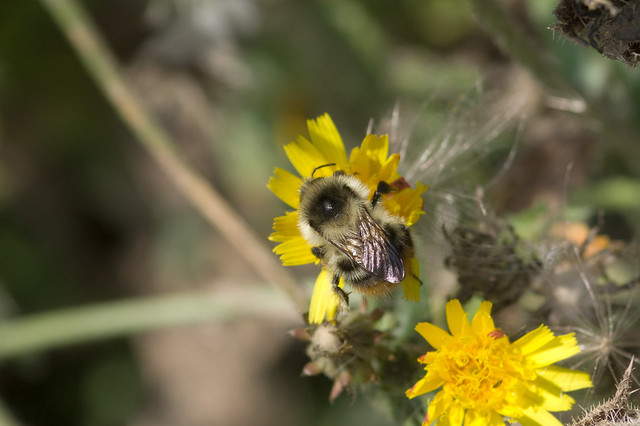 |
| Shrill Carder Bee |
Back at home the ivy is still the main attraction, with a pair of
Sericomyia silentis the highlight. I saw a fair few of these during my travels earlier in the year, but this is the first time I've seen them in Bedfordshire. I was also very pleased that a dark looking
Syrphus with thin looking stripes rewarded closer inspection by turning out to be
Syrphus torvus, a common species, but one I rarely record due to the difficulty in recognising it as different from the other
Syrphus species in the field.
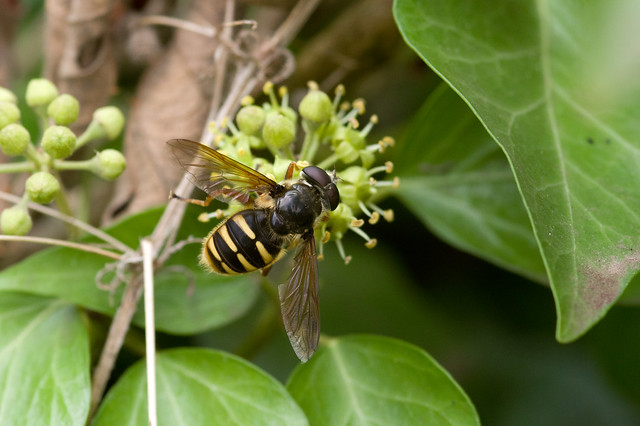 |
| Sericomyia silentis |
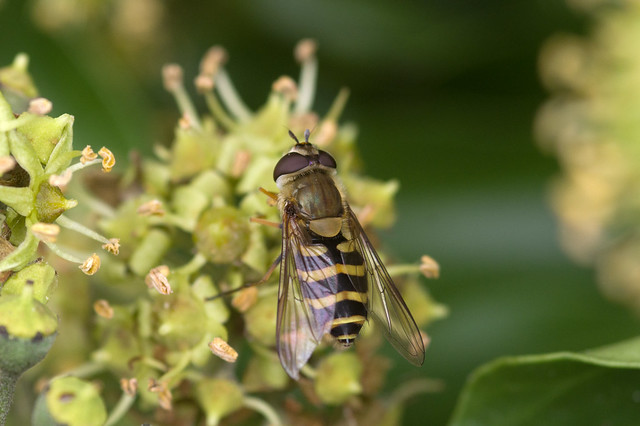 |
| Syrphus torvus - If you look very, very closely you can just about see the hairs in the eyes that are diagnostic for this species |







No comments:
Post a Comment